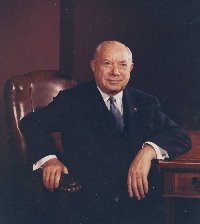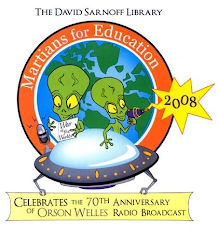On, Off, AND, OR, NOT: That’s what computers are made of, according to Joyce Weisbecker. And she should know, both as a retired computer scientistand electronics engineer for Lockheed Martin and as the daughter of Joe Weisbecker, the inventor of RCA’s first personal computer in 1972. On Saturday, January 28, at 11 a.m. and 2 p.m. Ms. Weisbecker will explain the theory and practice of digital computing to children of all ages during the David Sarnoff Library’s openhouse and radio repair clinic.
“Personally, I like math,” she says, “but I know many people who don’t. If you can count to one, however, you know enough math for this talk. And if you can follow the logic of switching between AND, OR, and NOT, you can start building your own computer.” Co-sponsored by the New Jersey Antique Radio Club (NJARC), the open house will take place from 10 a.m. to 4 p.m. in Sarnoff Corporation’s auditorium and at the David Sarnoff Library, 201 Washington Road, Princeton, NJ.
The open house also features many other activities. The NJARC’s members don’t repair old computers—yet—but if you want your family heirloom radio repaired,the Radio Club offers a free clinic. Call (609) 734-2636 or email info@davidsarnoff.org with the brand and model number to make an appointment on the hour forone-on-one attention. Many vacuum-tube radios can be fixed in less than 60 minutes, and the Club’s experts will do it for free.
One hundred years ago, fifteen-year-old David Sarnoff began working as an office boy for the Marconi Wireless Telegraph Company of America. That same year,1906, Lee De Forest invented the vacuum-tube amplifier. The rest of the electronic century is history, and the Library’s executive director, Dr. Alex Magoun, will give a talk on David Sarnoff and the Innovative Spirit at 1 p.m. "David Sarnoff personifies the possibilities of the American Dream, from Hester Street to high technology," says Dr. Magoun. "There are few more inspiring stories than that of an immigrant who takes advantage of our freedoms of opportunity and expression toimprove himself and lead others in the creation of new technologies and industries that add to those freedoms."
And if you haven’t heard how good a theremin can sound in the hands of a master, come hear and see Kip Rosser play and explain the first electronic musical instrument in the Library’s museum. “Everyone says the theremin is incredibly difficult to play,” says Rosser. “Well, so’s the violin. If you have an ear and youpractice, you will improve.” Mr. Rosser plays a variety of jazz and pop from the last sixty years of the 20th century, and Dante Bucci will join him for some theremin duets from 10 a.m. to 1 p.m. and 2 to 4 p.m.
The Library’s exhibits offer opportunities for families to compare a century of home consumer media from Graphonolas to Aeriolas to televisions to Ipods. “Every generation has its own way of entertaining and educating itself with sight and sound,” says Dr. Magoun. “Introducing your children to these earlier formats is a greatway of connecting across generations.” The exhibits include a display on the 45-rpm record and player, the first transistor radio and television, a working 1948 television with camera, and a 1981 RCA VideoDisc player connected to a rare working model of RCA’s first color set, built in 1954. Remotes are not included.
The programs and museum are free admission although a suggested donation of five dollars per person is welcome.
The David Sarnoff Library is located at 201 Washington Road, east of Route 1, or at the end of Fisher Place off Route 1, just north of the Washington Road trafficcircle. For more information call 609-734-2636, or check the website at www.davidsarnoff.org/directions.htm. This event is made possible in part by an operating support grant from the New Jersey Historical Commission, a division of the Department of State; and the Friends of the David Sarnoff Library.
Tuesday, January 17, 2006
Subscribe to:
Post Comments (Atom)



1 comment:
Highlights of the day included Joyce Weisbecker's short courses on computer logic, the theremin duet on "Smells Like Teen Spirit" and other golden oldies by Kip Rosser and Dante Bucci, the many radios repaired, and especially the appearance by the original Miss Color TV, Marie McNamara Perlow. Then known as Marie McNamara, her auburn hair and "perfect skintone" earned her the title and responsibility of bearing up for hours under hot lights in studio or in all types of weather outdoors while RCA and NBC engineers adjusted the reception, transmission, and display of broadcast color video between 1950-54. It was a delight to have her review her album of photos and clippings, and we hope to see her again!
Post a Comment